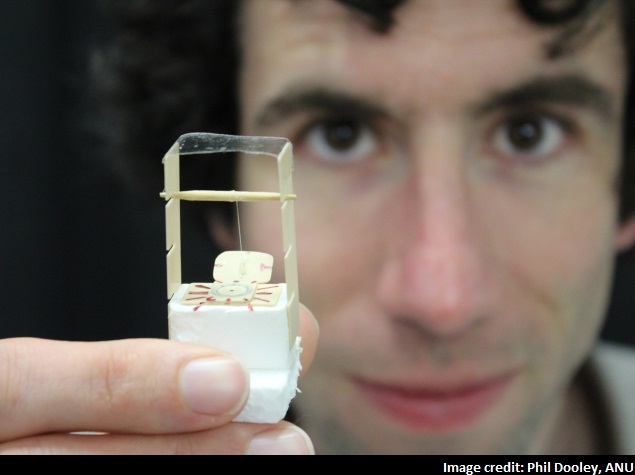- Home
- Science
- Science News
- New Metamaterial May Pave Way for Photonics to Replace Electronics
New Metamaterial May Pave Way for Photonics to Replace Electronics

The material shows extraordinary properties not typical of regular material and can lead to development of photonics, the faster, more compact and less carbon-hungry successor to electronics.
A random find in the washing basket led the team to create the latest in a new breed of materials known as metamaterials.
"Our material can put a twist into light - that is, rotate its polarisation - orders of magnitude more strongly than natural materials," said lead author Mingkai Liu, a PhD student at The Australian National University (ANU) Research School of Physics and Engineering (RSPE). "And we can switch the effect on and off directly with light," Liu added.
Electronics is estimated to account for two percent of the global carbon footprint, a figure which photonics has the potential to reduce significantly.
Already light carried by fibre optics has replaced electricity for carrying signals over long distances. The next step is to develop photonic analogues of electronic computer chips, by actively controlling the properties of light, such as its polarisation, researchers said.
The ability of a material to rotate polarisation, as in this experiment, springs from the asymmetry of a molecule. However the remarkable properties of this artificial material might first be put to use in the budding photonics industry, suggests co-author Dr David Powell, also from RSPE.
"It's another completely new tool in the toolbox for processing light," he said. "Thin slices of these materials can replace bulky collections of lenses and mirrors. This miniaturisation could lead to the creation of more compact opto-electronic devices, such as a light-based version of the electronic transistor," said Powell.
The metamaterials are formed from a pattern of tiny metal shapes, dubbed meta-atoms. To obtain optical rotation Liu and his colleagues used pairs of C-shaped meta-atoms, one suspended above the other by a fine wire.
When light is shined on to the pair of meta-atoms the top one rotates, making the system asymmetric.
"The high responsiveness of the system comes because it is very easy to make something hanging rotate. The idea came to me when I found a piece of wire in my washing one day," said Liu.
The findings are published in the journal Nature Communications.Catch the latest from the Consumer Electronics Show on Gadgets 360, at our CES 2026 hub.
- Samsung Galaxy Unpacked 2025
- ChatGPT
- Redmi Note 14 Pro+
- iPhone 16
- Apple Vision Pro
- Oneplus 12
- OnePlus Nord CE 3 Lite 5G
- iPhone 13
- Xiaomi 14 Pro
- Oppo Find N3
- Tecno Spark Go (2023)
- Realme V30
- Best Phones Under 25000
- Samsung Galaxy S24 Series
- Cryptocurrency
- iQoo 12
- Samsung Galaxy S24 Ultra
- Giottus
- Samsung Galaxy Z Flip 5
- Apple 'Scary Fast'
- Housefull 5
- GoPro Hero 12 Black Review
- Invincible Season 2
- JioGlass
- HD Ready TV
- Laptop Under 50000
- Smartwatch Under 10000
- Latest Mobile Phones
- Compare Phones
- OPPO A6 Pro 5G
- OPPO A6s
- OPPO Reno 15 Pro Max
- Honor Win RT
- Honor Win
- Xiaomi 17 Ultra Leica Edition
- Xiaomi 17 Ultra
- Huawei Nova 15
- Asus ProArt P16
- MacBook Pro 14-inch (M5, 2025)
- OPPO Pad Air 5
- Huawei MatePad 11.5 (2026)
- Xiaomi Watch 5
- Huawei Watch 10th Anniversary Edition
- Acerpure Nitro Z Series 100-inch QLED TV
- Samsung 43 Inch LED Ultra HD (4K) Smart TV (UA43UE81AFULXL)
- Asus ROG Ally
- Nintendo Switch Lite
- Haier 1.6 Ton 5 Star Inverter Split AC (HSU19G-MZAID5BN-INV)
- Haier 1.6 Ton 5 Star Inverter Split AC (HSU19G-MZAIM5BN-INV)












